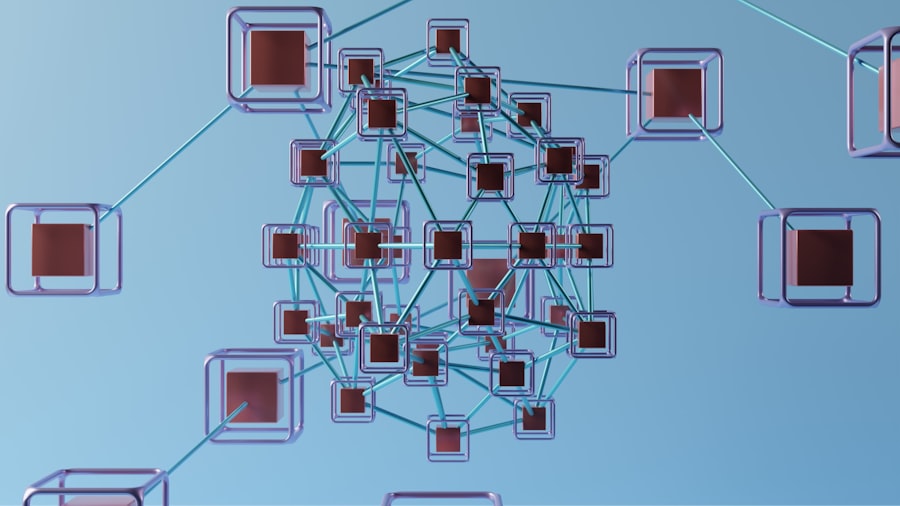Blockchain technology, often heralded as a revolutionary advancement in the digital landscape, is fundamentally a decentralized ledger system that records transactions across multiple computers. This technology ensures that the recorded data is immutable, meaning it cannot be altered retroactively without the consensus of the network. Originally developed as the underlying framework for cryptocurrencies like Bitcoin, blockchain has transcended its initial purpose and is now being explored for a myriad of applications across various sectors.
Its core attributes—transparency, security, and decentralization—make it particularly appealing for industries that require robust data integrity and trust among participants. The essence of blockchain lies in its ability to create a shared and tamper-proof record of transactions, which can be accessed by all authorized parties in real-time. This characteristic is especially significant in an era where data breaches and fraud are rampant.
By eliminating the need for intermediaries, blockchain not only streamlines processes but also reduces costs associated with traditional transaction methods. As businesses increasingly seek innovative solutions to enhance operational efficiency and build consumer trust, the adoption of blockchain technology is gaining momentum. This article delves into the critical role of blockchain in enhancing supply chain transparency, a vital component for businesses aiming to foster trust and accountability in their operations.
Key Takeaways
- Blockchain technology is a decentralized, distributed ledger that securely records transactions across multiple computers.
- Supply chain transparency is crucial for businesses to build trust with consumers and stakeholders, and to ensure ethical and sustainable practices.
- Blockchain enhances supply chain transparency by providing an immutable record of transactions, enabling real-time tracking and tracing of products, and ensuring data integrity.
- Examples of blockchain implementation in supply chain management include Walmart using blockchain to track food products, and De Beers using it to track diamonds.
- Benefits of using blockchain for supply chain transparency include increased trust, reduced fraud, improved efficiency, and better compliance with regulations.
The Importance of Supply Chain Transparency
Consumer Demand for Ethical Sourcing
In today’s interconnected global economy, consumers are increasingly concerned about the origins of the products they purchase, including how they are manufactured and transported. This heightened awareness has prompted companies to adopt more transparent practices, as failure to do so can lead to reputational damage and loss of customer loyalty.
Benefits of Supply Chain Transparency
Transparency in the supply chain not only builds trust with consumers but also enhances operational efficiency by enabling companies to identify inefficiencies and mitigate risks more effectively. Moreover, regulatory pressures are compelling organizations to provide greater visibility into their supply chains.
A Fundamental Requirement for Compliance and Risk Management
In this context, supply chain transparency is not merely a competitive advantage; it has become a fundamental requirement for compliance and risk management. As businesses strive to meet these demands, they are increasingly recognizing that transparency can lead to improved relationships with stakeholders, including suppliers, customers, and investors, ultimately driving long-term success.
How Blockchain Enhances Supply Chain Transparency

Blockchain technology enhances supply chain transparency by providing a secure and immutable record of every transaction that occurs within the supply chain ecosystem. Each participant in the supply chain can access this shared ledger, which contains detailed information about the movement of goods from origin to destination. This level of visibility allows stakeholders to track products at every stage of their journey, ensuring that they can verify claims related to sourcing, quality, and compliance with regulations.
By enabling real-time tracking and verification, blockchain significantly reduces the potential for fraud and misrepresentation, fostering a culture of accountability among all parties involved. Additionally, the decentralized nature of blockchain eliminates the reliance on a single point of control or authority, which can often lead to discrepancies and disputes. Instead, all participants have equal access to the same information, which promotes collaboration and trust among stakeholders.
Smart contracts—self-executing contracts with the terms of the agreement directly written into code—further enhance this transparency by automating processes and ensuring that all parties adhere to agreed-upon terms without the need for intermediaries. As a result, blockchain not only streamlines operations but also empowers businesses to make informed decisions based on accurate and up-to-date information.
Examples of Blockchain Implementation in Supply Chain Management
Several companies across various industries have begun to implement blockchain technology in their supply chain management processes, showcasing its potential to enhance transparency and efficiency. For instance, Walmart has partnered with IBM to develop a blockchain-based system that tracks food products from farm to store shelves. This initiative allows Walmart to quickly trace the origin of food items in the event of a contamination issue, significantly reducing response times and ensuring consumer safety.
By leveraging blockchain’s immutable ledger, Walmart can provide consumers with verifiable information about the sourcing and handling of their food products, thereby enhancing trust in its brand. Another notable example is De Beers, the diamond company that has adopted blockchain technology to track the provenance of diamonds from mine to market. Through its platform called Tracr, De Beers ensures that each diamond is ethically sourced and free from conflict.
This initiative not only helps combat issues related to blood diamonds but also provides consumers with confidence in their purchases. By utilizing blockchain to verify the authenticity and ethical sourcing of diamonds, De Beers is setting a new standard for transparency in the luxury goods market, demonstrating how technology can be harnessed to address longstanding ethical concerns.
Benefits of Using Blockchain for Supply Chain Transparency
The benefits of utilizing blockchain technology for supply chain transparency are manifold and extend beyond mere compliance or risk mitigation. One of the most significant advantages is enhanced traceability. With blockchain’s ability to provide a comprehensive view of product journeys, companies can easily trace back through their supply chains to identify potential issues or inefficiencies.
This capability not only aids in quality control but also allows businesses to respond swiftly to any disruptions or recalls, thereby minimizing financial losses and protecting brand reputation. Furthermore, blockchain fosters greater collaboration among supply chain partners by creating a shared platform for information exchange. This collaborative environment encourages stakeholders to work together more effectively, leading to improved communication and reduced friction in transactions.
Additionally, the automation capabilities offered by smart contracts can streamline processes such as payments and order fulfillment, reducing administrative burdens and accelerating transaction times. Ultimately, these benefits culminate in a more resilient supply chain that can adapt to changing market conditions while maintaining high levels of transparency and accountability.
Challenges and Limitations of Blockchain in Supply Chain Transparency

Infrastructure and Resource Challenges
This transition can be daunting for businesses, particularly smaller enterprises with limited resources. The costs associated with upgrading or replacing existing systems can be prohibitively expensive, making it difficult for some organizations to adopt blockchain technology. Additionally, achieving consensus among diverse stakeholders regarding data sharing protocols and governance structures can be complex and time-consuming.
Scalability and Performance Concerns
Another challenge lies in the scalability of blockchain networks. As more participants join a blockchain ecosystem, the volume of transactions increases exponentially, potentially leading to slower processing times and higher costs associated with maintaining network performance. This can be a significant concern for organizations that require fast and efficient transaction processing.
Security Risks and Cyber Threats
While blockchain provides enhanced security features compared to traditional systems, it is not entirely immune to cyber threats or vulnerabilities. The reliance on digital identities and cryptographic keys introduces new risks that organizations must address through robust cybersecurity measures. This requires significant investment in security protocols and ongoing monitoring to prevent potential breaches.
In conclusion, while blockchain holds great promise for enhancing supply chain transparency, businesses must navigate these challenges carefully to realize its full potential.
Future Outlook for Blockchain in Supply Chain Transparency
Looking ahead, the future of blockchain technology in enhancing supply chain transparency appears promising yet complex. As more organizations recognize the value of transparent supply chains in building consumer trust and meeting regulatory requirements, we can expect an increase in adoption rates across various industries. The ongoing development of interoperability standards will likely facilitate smoother integration between different blockchain platforms and existing systems, making it easier for companies to leverage this technology without overhauling their entire infrastructure.
Moreover, advancements in artificial intelligence (AI) and machine learning (ML) are poised to complement blockchain’s capabilities further. By analyzing data stored on blockchain networks, AI algorithms can provide valuable insights into supply chain performance and identify areas for improvement. This synergy between technologies could lead to even greater efficiencies and innovations within supply chains.
As businesses continue to prioritize sustainability and ethical practices, blockchain’s role as a tool for ensuring transparency will become increasingly vital in shaping responsible supply chains that meet both consumer expectations and regulatory demands. In this evolving landscape, organizations that embrace blockchain technology will likely gain a competitive edge while contributing positively to global supply chain integrity.
For those interested in the intersection of technology and business, particularly how blockchain can enhance supply chain transparency, a related topic worth exploring is the coverage of technology advancements and their applications in industry. A great resource for this is Recode, a technology news website owned by Vox Media. Recode delves into various tech-related topics, including how emerging technologies like blockchain are being integrated into different sectors. You can read more about such technologies and their impact on business and industry at Recode by Vox Media. This site provides insightful analysis that complements the understanding of blockchain’s role in enhancing supply chain transparency.
FAQs
What is blockchain technology?
Blockchain technology is a decentralized, distributed ledger that records transactions across many computers in such a way that the registered transactions cannot be altered retroactively. It is the underlying technology behind cryptocurrencies like Bitcoin, but its potential applications extend far beyond digital currencies.
What is supply chain transparency?
Supply chain transparency refers to the ability to track and trace products and their components throughout the entire supply chain, from raw material sourcing to production, distribution, and consumption. It involves providing visibility into the origins, authenticity, and movement of products to ensure ethical and sustainable practices.
How does blockchain improve supply chain transparency?
Blockchain improves supply chain transparency by providing a secure and immutable record of transactions and product movements. It enables all parties involved in the supply chain to have real-time access to a single, trusted source of information, reducing the risk of fraud, counterfeiting, and unethical practices.
What are the benefits of using blockchain for supply chain transparency?
Some of the benefits of using blockchain for supply chain transparency include increased trust and accountability, reduced fraud and counterfeiting, improved traceability and authenticity verification, and enhanced efficiency in supply chain operations.
What are some real-world examples of blockchain being used for supply chain transparency?
There are several real-world examples of blockchain being used for supply chain transparency, such as in the food industry for tracking the origin of produce, in the fashion industry for verifying the authenticity of luxury goods, and in the pharmaceutical industry for ensuring the integrity of drugs and medical supplies.
What are the challenges of implementing blockchain for supply chain transparency?
Challenges of implementing blockchain for supply chain transparency include the need for industry-wide collaboration and standardization, concerns about data privacy and security, the complexity of integrating blockchain with existing systems, and the cost and scalability of blockchain solutions.

